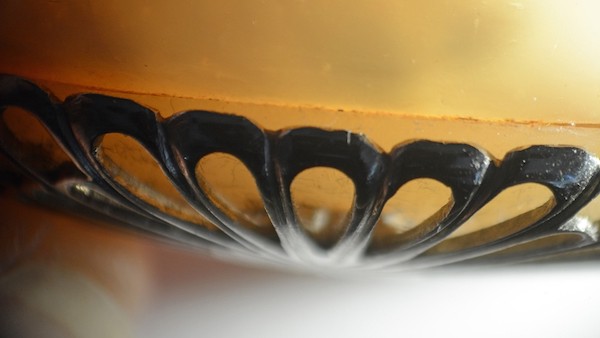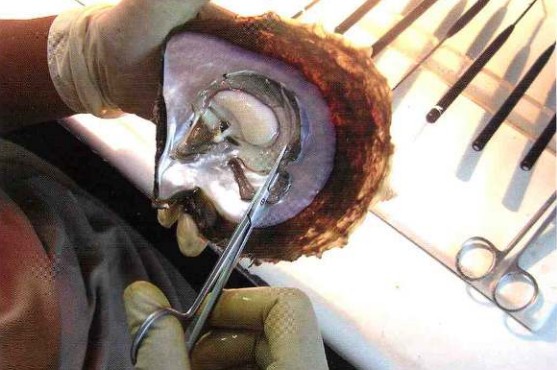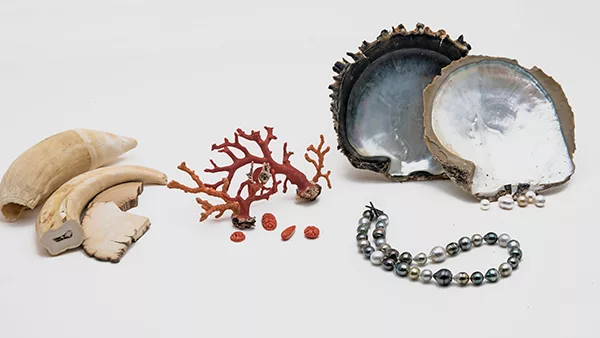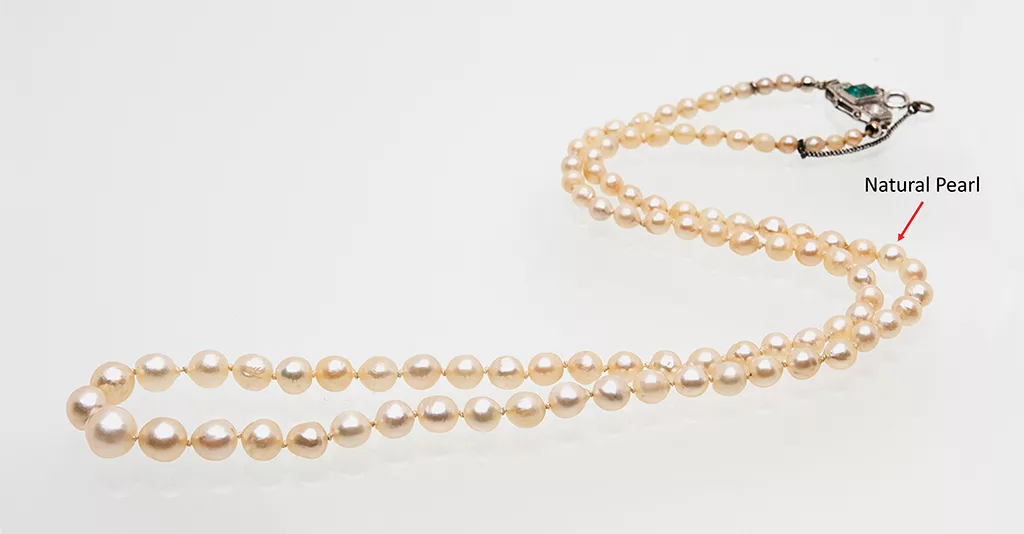
One natural pearl in a cultured pearl necklace
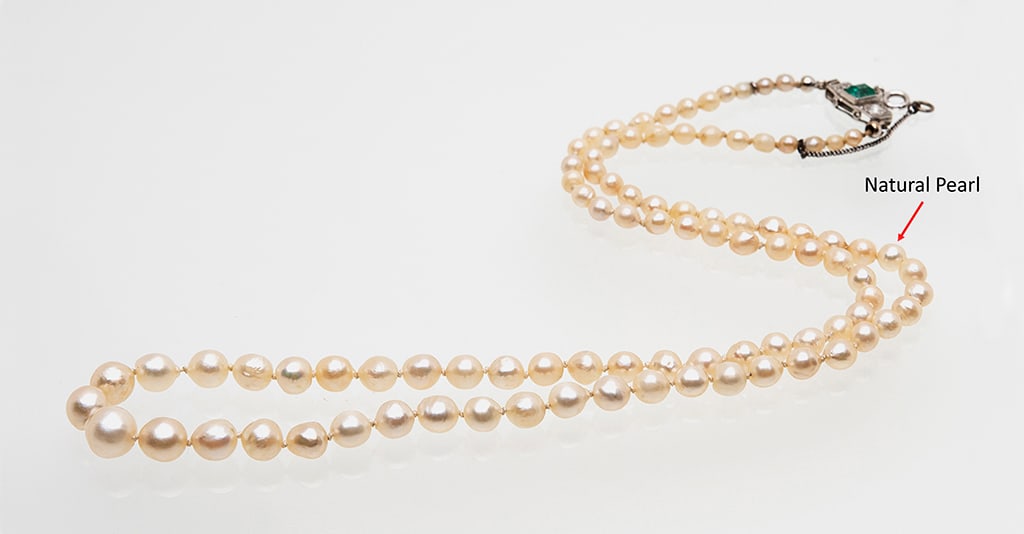
Testing pearl necklaces can be rather painstaking work, as at least two gemmologists at SSEF meticulously and individually check a necklace pearl by pearl, with the aim of finding one (or more) cultured pearl(s) possibly hidden somewhere in the strand. Countless natural pearl necklaces tested at SSEF in the past decades contained one to few cultured pearls, presumably added unknowingly during a later addition or during the repair of a broken strand by a jeweller who may have used a lot of untested pearls available in the workshop.
To our surprise, we recently encountered the opposite situation with a pearl necklace submitted for testing. X-ray luminescence and microscopy readily unveiled that the necklace consisted predominantly of beaded cultured pearls of Ayoka type. Only by checking pearl-by-pearl on the radiographies, it became obvious that one of the pearls in fact is a saltwater natural pearl, showing a distinct and characteristic onion-like internal growth structure with a dark organic-rich centre (Figure 2a).
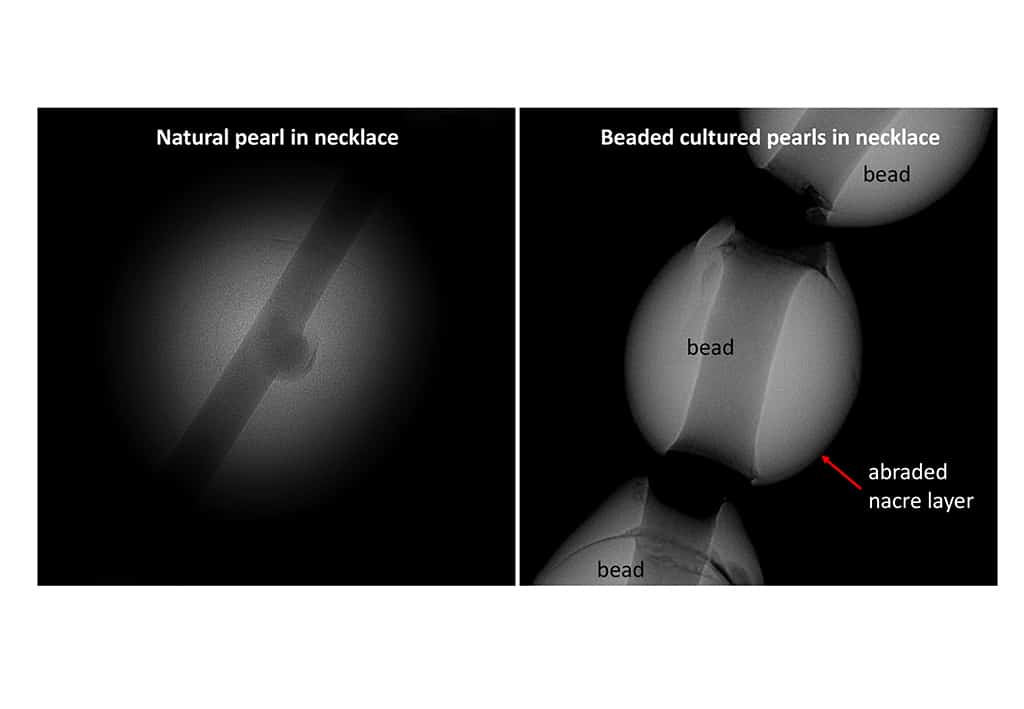
Based on the extent of wearing visible on these pearls, notably with some pearls showing a nearly abraded nacreous layer on top of their round freshwater beads (Figure 2b), we presume that this necklace is made ofcultured pearls from an early Akoya pearl production and was worn quite many years by its owner. The presence of the natural pearl is possibly best explained as above during a repair/addition at later stages.
Not so surprisingly, our client was much less intrigued by our findings than our gemmologists, who had never seen such a case before.
Want to learn more about pearls?
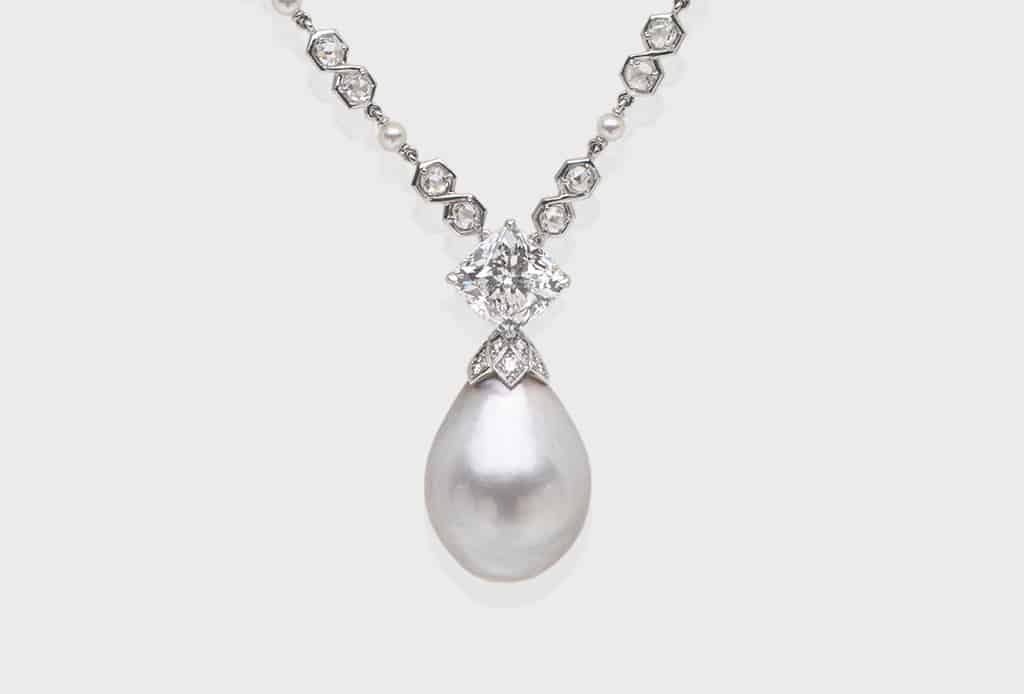
Sign up for our free online course: Introduction to pearls
